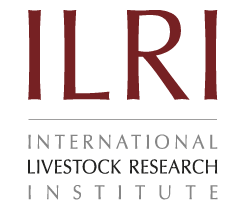Small Ruminant Containment in Protective Sheds
Summary
Under extensive livestock production systems, goats and sheep spend days browsing and nights in open fields or makeshift confinement. Poorly confined animals are exposed to predators and theft and must roam excessively to feed. At the same time, close cohabitation with humans predisposes livestock producers to infectious diseases that spread from animals to humans. Housing is particularly important to young animals by protecting them from inclement weather and providing better feed, waste management and biosecurity. Small-scale farmers may not be able to afford the cost of building elaborate shelters, but designs are available to construct simpler shelters using locally available materials. This section provides some guidelines for constructing such shelters.
About the Solution
A shed can be built from locally available materials such as timber, bamboo, or lumber off-cuts in combination with wire and fencing. These sheds usually include access to nearby daytime grazing. Proper shelter includes feed and water troughs that may be wooden, metal or plastic, sometimes fed through automated devices. The shed should be well drained and ventilated. Floors are best raised and made from wood or other insulated material. Once weaned, kids and lambs are best kept separately from adults, requiring between 0.2 to 0.3 m2 for up to three to four months, increasing to 1.5 m2 or more over time.
Low-cost containment sheds are more common among mixed livestock-crop farmers than pastoralists, the latter preferring fences of natural materials (or bomas) to structures. These sheds are common features across smallholder farming areas in Cote D’Ivoire, Ethiopia, Ghana, Kenya, Mali, Nigeria, Uganda and elsewhere. To a large extent, weather and location dictate the design and materials used. In the lowlands, more space and open designs permit ventilation and cooling, in highland areas sheds are designed to conserve heat, and in less populated places priority is placed upon excluding predators. Under warm conditions, shade trees are advantageous.
Floors are best raised to 1 m aboveground and composed of wooden planks 2.5 cm or more thick. A gap of 1 cm placed between planks allows urine and feces to drop to the ground. Wider slits predispose animals to leg injury. Alternatively, PVC, non-slip flooring is commercially available for purchase online and from livestock accessory sellers. Side walls are built with brick or wood to a height of 0.5 to 0.75 m and the upper wall finished with wire mesh to a height of 2.5 m. Gable roofing of corrugated sheets is preferred. Extended eaves 0.5 m from the wall provides better shading and protection from rain splash, and allows space for externally mounted feeding troughs. In some cases, nylon or tarpaulin covers are attached to the eaves, and dropped for protection from cold and inclement weather. Where possible, smaller, separate sheds confine and isolate sick animals.
Sheds in the tropics are best built along an east-west orientation for better shading. The size is determined by the number of animals to be housed. A practical size is about 12m x 8 m (or 96 m2), able to accommodate 50 or so adult females. Other complementary structures are dipping tanks or a spray race, a weighing bay, gangways for controlling flock movement, and a feed store. It may be advantageous to establish fenced grazing areas around the shed.
Commercialization
Commercially available
Solution Images
Institutions




